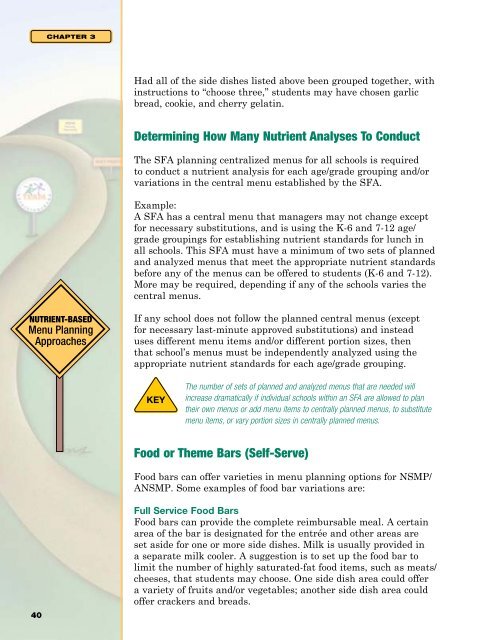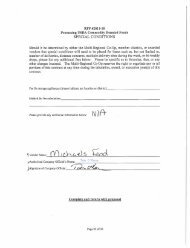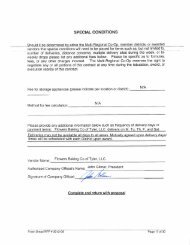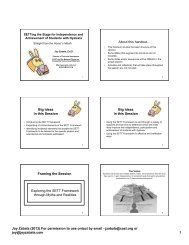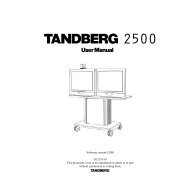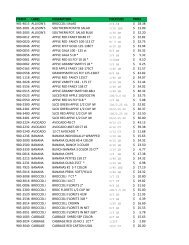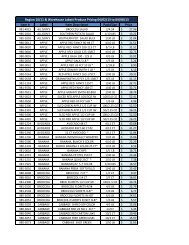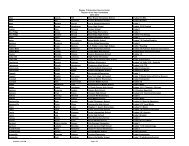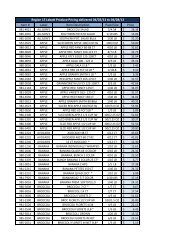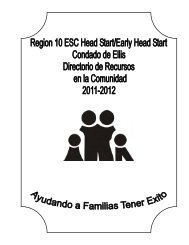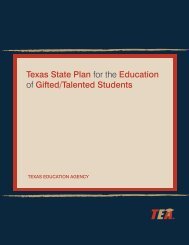Road to SMI Success Manual - Region 10 Education Service Center
Road to SMI Success Manual - Region 10 Education Service Center
Road to SMI Success Manual - Region 10 Education Service Center
You also want an ePaper? Increase the reach of your titles
YUMPU automatically turns print PDFs into web optimized ePapers that Google loves.
Chapter 3<br />
Had all of the side dishes listed above been grouped <strong>to</strong>gether, with<br />
instructions <strong>to</strong> “choose three,” students may have chosen garlic<br />
bread, cookie, and cherry gelatin.<br />
Determining How Many Nutrient Analyses To Conduct<br />
The SFA planning centralized menus for all schools is required<br />
<strong>to</strong> conduct a nutrient analysis for each age/grade grouping and/or<br />
variations in the central menu established by the SFA.<br />
Example:<br />
A SFA has a central menu that managers may not change except<br />
for necessary substitutions, and is using the K-6 and 7-12 age/<br />
grade groupings for establishing nutrient standards for lunch in<br />
all schools. This SFA must have a minimum of two sets of planned<br />
and analyzed menus that meet the appropriate nutrient standards<br />
before any of the menus can be offered <strong>to</strong> students (K-6 and 7-12).<br />
More may be required, depending if any of the schools varies the<br />
central menus.<br />
Nutrient-Based<br />
Menu Planning<br />
Approaches<br />
If any school does not follow the planned central menus (except<br />
for necessary last-minute approved substitutions) and instead<br />
uses different menu items and/or different portion sizes, then<br />
that school’s menus must be independently analyzed using the<br />
appropriate nutrient standards for each age/grade grouping.<br />
The number of sets of planned and analyzed menus that are needed will<br />
increase dramatically if individual schools within an SFA are allowed <strong>to</strong> plan<br />
their own menus or add menu items <strong>to</strong> centrally planned menus, <strong>to</strong> substitute<br />
menu items, or vary portion sizes in centrally planned menus.<br />
Food or Theme Bars (Self-Serve)<br />
Food bars can offer varieties in menu planning options for NSMP/<br />
ANSMP. Some examples of food bar variations are:<br />
40 40<br />
Full <strong>Service</strong> Food Bars<br />
Food bars can provide the complete reimbursable meal. A certain<br />
area of the bar is designated for the entrée and other areas are<br />
set aside for one or more side dishes. Milk is usually provided in<br />
a separate milk cooler. A suggestion is <strong>to</strong> set up the food bar <strong>to</strong><br />
limit the number of highly saturated-fat food items, such as meats/<br />
cheeses, that students may choose. One side dish area could offer<br />
a variety of fruits and/or vegetables; another side dish area could<br />
offer crackers and breads.


